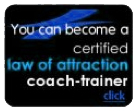Articles
Six Surprising Strategies for Maximizing
the Initial Client Meeting
by Karen van Warmerdam
First meetings with prospective customers are critical to your success. How you use the opportunity can
determine both your overall sales productivity and your success with the specific business opportunity. To maximize
your use of time and effort, start implementing actions that support the following strategies.
Know your mission
1. What type of customer you're looking for?
2. What type of business opportunities are you open for?
3. What's flexible and negotiable for you - and what's not?
4. What do you ultimately want in your business?
5. What you want from this particular meeting?
6. What is the next action and milestone you want to come from this meeting?
Suggested Actions:
- If you don't already have them, take a few minutes to document the first
4 points and keep them as part of your business strategy review.
- Before each new meeting, write down your answer to question 5 & 6 as part of your
standard pre-meeting preparations.
Remember to give
Your attitude and the behaviours that stem from it can make a huge difference in how you're welcomed and perceived.
A critical part of doing business
is building relationships. Remember to be of service, no matter what your business. Specifically:
- Give your attention. Truly listen. Be genuinely interested.
All great sales people love interacting with people. As a guideline, you should probably be listening 60 to 90%
of the time in your first discussion or meeting.
- Give "assistance". There are lots of things or pieces of information
you have, which could be valuable or of use to your prospect. Share them. Be generous. It shows the type of person you
are as well as how much you can support or assist the person or company if they eventually hire you. Again, you don't do
this to get hired; do this as standard operating procedure. Consider that sharing is a normal way you do business and
provide people with:
| Information |
Resources |
Input |
| Expertise |
Feedback |
Useful tools |
| Websites |
Market info |
References |
| Referrals |
Recommendations |
|
Suggested Actions:
- Think about what you can "give" before each meeting. Note it,
bring it, give it and share it, then and there, no strings attached.
- When in the middle of a discussion, if something comes to mind, share it.
Give when inspiration strikes!
Allow, Build & Evaluate CAT (Credibility, Affinity & Trust)
There's an old sales adage that "people buy from people they like". This is true, and there's more.
We buy from people we trust and from people we deem credible.
We buy services and products that we trust and find credible. And on the final level, we buy from companies
we consider trustworthy and credible.
If any one of the CAT elements is missing for the salesperson, product/service or company, it can be a reason why
we won't buy. And our customers behave the same way.
The easy example of CAT is the "pushy salesperson" as someone we don't like. But we will also not buy from someone
whom we like, if we don't find his or her product credible. Or we may like someone well "enough", but don't trust
them enough to do business with them - think of the life of the party, with whom you won't enter into a business transaction.
Look for ways and information to allow people to get to know you, like you, build trust and believe in your
credibility. Build this information or actions into the beginning of the meeting.
Conversely, keep in mind the levels of credibility, affinity and trust that you have for the other person and their company.
Suggested Actions:
- Create a list of information about you, your business & your product or service that
can build CAT with people in your target customer group.
Discover - Ask Questions
The single most critical decision you make in an initial meeting is determining fit. In order to do that, you need to listen
for specific information. Some of this information you can know ahead of time that you will need. Ask questions to discover the
following critical information about a possible business opportunity:
1. The goal(s) & objectives of the person and the company
2. The players: decision makers, roles, organizational structure, etc
3. Their needs, challenges, problems & situation
4. Relevant and critical time frames, schedules & deadlines
5. Requirements, restrictions, limitations & constraints that are involved
6. Availability and amount of budget, money, or funding
7. Their opinion, response, reluctance, concerns or "objections" to moving forward
Suggested Actions:
- Make a standard list of the critical questions you will ask in first meeting discussions.
- Bring a custom version with you to each first meeting for each prospect. Make this a
standard part of your pre-meeting preparation. Depending on your service or product this list could easily be between 3
and twenty questions.
Determine - is it a good fit?
If you've attended to the previous four strategies, you should be in a good position to determine if you really
have a business opportunity and how good it may be. Notice that we don't assume a meeting means you should then
proceed. Determining fit means YOU consciously decide about continuing based on intelligent criteria and the
information at hand. To determine fit, evaluate the following:
1. Is the prospect's need a very good to excellent fit for my product or service?
2. Is this the type of business or deal you or your company want?
3. Is this someone you can do business with?
4. Do you want this person and/or company as a client?
5. How's the CAT?
6. Is this a good, overall fit in order to proceed?
7. What's your next step?
Suggested Actions:
After each meeting review, evaluate and make your determinations - you'll eventually learn you can do it in a minute.
Include your "gut" and intuition in your evaluation.
Create a specific short checklist similar to the points above to help you.
Be Willilng to Walk
Strategy 6 is the most critical and most simple: be willing to walk away if there isn't a good, real opportunity.
You will save yourself time, money and effort.
If you are able to have this perspective in your marketing and sales efforts, it transforms the way you work.
It changes everything.
Yes, occasionally you may walk away from business that would have worked out well, but more likely, you're currently
pursuing too many non-opportunities or taking on too many poor opportunities. Both major corporations and solo-entrepreneurs
make the same mistake.
The single most important thing you might need to do to grow your business, is spend time with the right prospects - which
means stop spending time with non-prospects. The opportunity costs of spending time, effort, resources, money and energy in
the wrong place is tremendous. Therefore don't only walk away - walk away as early as possible, preferably after your first discussion.
Suggested Actions:
- Make a conscious decision to proceed or walk away after each initial discussion.
Use the incomplete information you have from your questions, listening, goals, mission, determinations, and gut feeling and
make a decision. Be brutally honest in your evaluations. Consider where would be the better use of your time.
- If necessary, walk away when there isn't a good business fit. Do it judiciously.
- Pay attention if you are never walking away from a "prospective" opportunity, and
check if you're really being productive with everything you pursue.
In closing, successful sales persons use their time optimally. Do the same in your prospect and customer meetings and you'll be
more productive, successful and satisfied with your results. Good luck!
Write your goals down!
Write your goals down (or draw, paint them etc). It helps to make them real where you can see them,
rather than swirling about endlessly in your head, where they have no outlet. This will also help to keep you on track.
The phrasing of goals is also very important. Phrase them in the present, so you can act as if they're
already happening. This programs your brain to start working towards it. Use "I am...." instead of "I will...".
The latter refers to some indeterminate time in the future - which may never happen. The former keeps you firmly
focused in the here and now, while keeping the future in sight.
Also remember that just because a goal is written down, doesn't mean that it is set in stone! You are always free
to change and modify your goals as your circumstances change.
Cheryl Vallejos is a certified in Law of Attraction practitioner who imparts her wisdom on attracting happiness, success and prosperity - mentally, emotionally and spiritually. Cheryl is author of "Injecting the Juice into Leadership" and "Time on Your Side" is a professional business coach and consultant with over 22 years experience in business leadership. She works with professionals who are ready to attract more success, happiness and abundance in their life as they combine The Law of Attraction with business building techniques. Click here to sign up for the FREE electronic book,"Using the Law of Attraction for Personal and Professional Success" or contact her for more information: Cheryl@PrimeLeaders.com
Prime Leaders - It's Prime Time for Success!
|
|
|
|





Personalized Coaching
Specialized Programs
Business Development
Personal Growth & Development
The Law of Attraction Made Easy
Your Spiritual Journey
Transform Your Life
Energy Services

|










